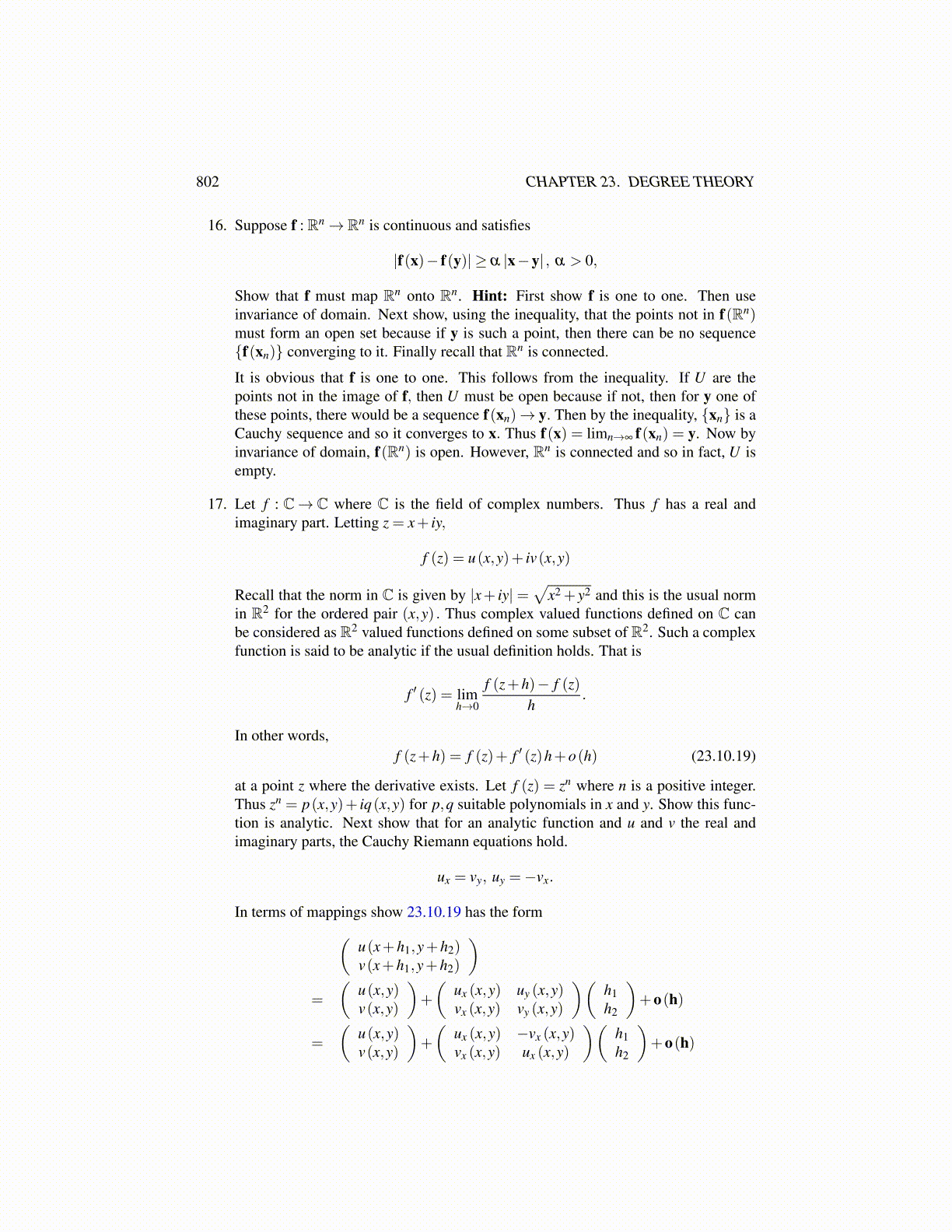
802 CHAPTER 23. DEGREE THEORY
15. Let Ω be an open bounded subset ofRn and let f,g : Ω→Rn both be continuous suchthat
|f(x)|− |g(x)|> 0
for all x ∈ ∂Ω. Show that then
d (f−g,Ω,0) = d (f,Ω,0)
Show that if there exists x ∈ f−1 (0) , then there exists x ∈ (f−g)−1 (0). Hint: Youmight consider h(t,x) ≡ (1− t) f(x) + t (f(x)−g(x)) and argue 0 /∈ h(t,∂Ω) fort ∈ [0,1].
16. Suppose f : Rn→ Rn is continuous and satisfies
|f(x)− f(y)| ≥ α |x−y| , α > 0,
Show that f must map Rn onto Rn. Hint: First show f is one to one. Then useinvariance of domain. Next show, using the inequality, that the points not in f(Rn)must form an open set because if y is such a point, then there can be no sequence{f(xn)} converging to it. Finally recall that Rn is connected.
It is obvious that f is one to one. This follows from the inequality. If U are thepoints not in the image of f, then U must be open because if not, then for y one ofthese points, there would be a sequence f(xn)→ y. Then by the inequality, {xn} is aCauchy sequence and so it converges to x. Thus f(x) = limn→∞ f(xn) = y. Now byinvariance of domain, f(Rn) is open. However, Rn is connected and so in fact, U isempty.
17. Let f : C→ C where C is the field of complex numbers. Thus f has a real andimaginary part. Letting z = x+ iy,
f (z) = u(x,y)+ iv(x,y)
Recall that the norm in C is given by |x+ iy| =√
x2 + y2 and this is the usual normin R2 for the ordered pair (x,y) . Thus complex valued functions defined on C canbe considered as R2 valued functions defined on some subset of R2. Such a complexfunction is said to be analytic if the usual definition holds. That is
f ′ (z) = limh→0
f (z+h)− f (z)h
.
In other words,f (z+h) = f (z)+ f ′ (z)h+o(h) (23.10.19)
at a point z where the derivative exists. Let f (z) = zn where n is a positive integer.Thus zn = p(x,y)+ iq(x,y) for p,q suitable polynomials in x and y. Show this func-tion is analytic. Next show that for an analytic function and u and v the real andimaginary parts, the Cauchy Riemann equations hold.
ux = vy, uy =−vx.